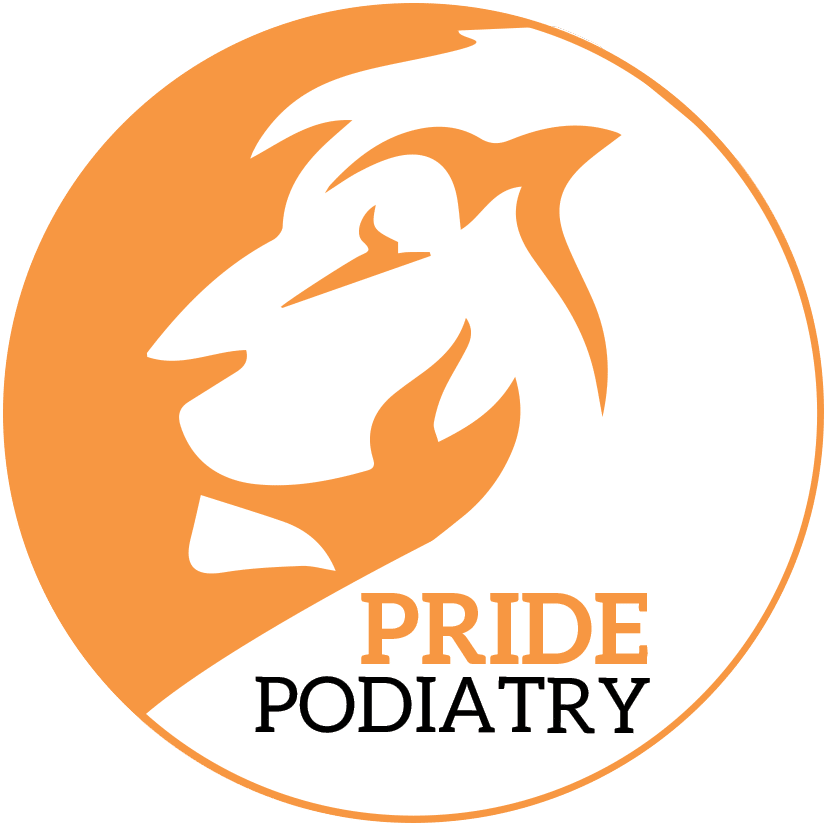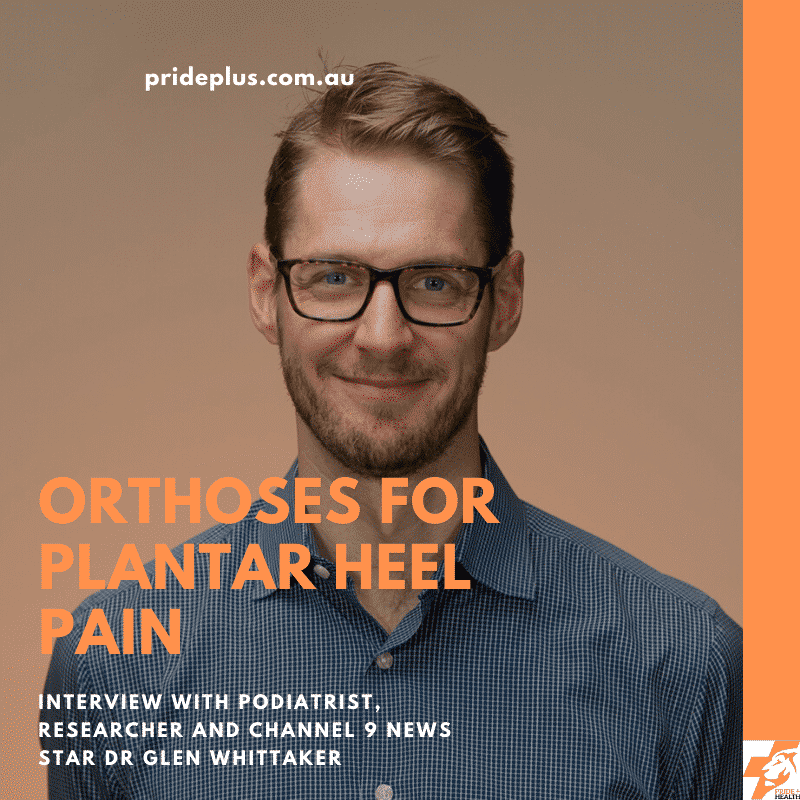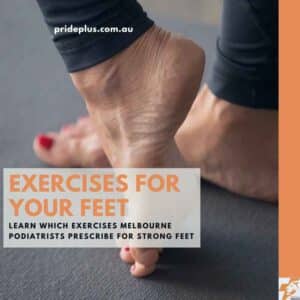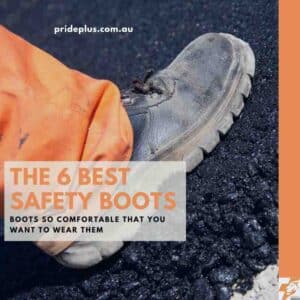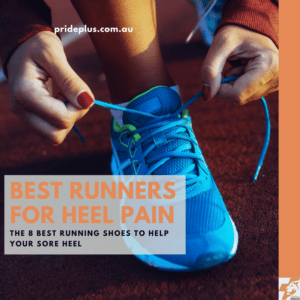Interview with Podiatrist, Researcher and Channel 9 News Star Dr Glen Whittaker
Heel pain. We’ve written about it before, (here, here and here). And with some hot off the press research completed by Dr Glen Whittaker, it’s important we write about it again.
Why is that?
Well, there’s a lot of us out there who get sore heels. The condition known as plantar fasciitis or plantar fasciopathy has been shown to affect between 3.6% and 6.9% of community-dwelling people. In the past plantar fasciitis was considered a self limiting condition however with more quality research it’s been found that up to 50% of people still have symptoms 5 years after they started.
As such, it’s no surprise that some of our finest minds at the best health science university in Melbourne, La Trobe University, (ok, declaring my bias as a LTU graduate and current staff member) have been looking at effective treatments for plantar heel pain.
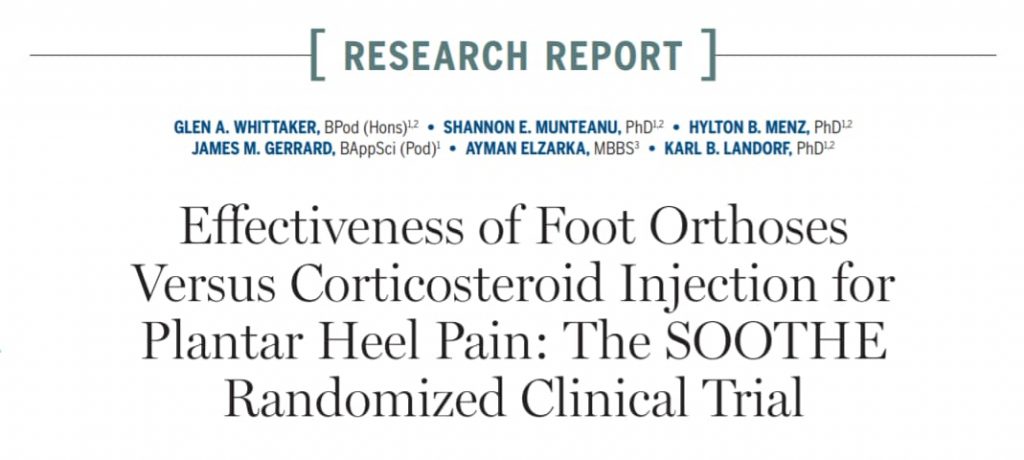
With this latest article from Glen Whittaker PhD in print and in the media it’s a great time for us to have a talk with one of the foremost experts on the topic.
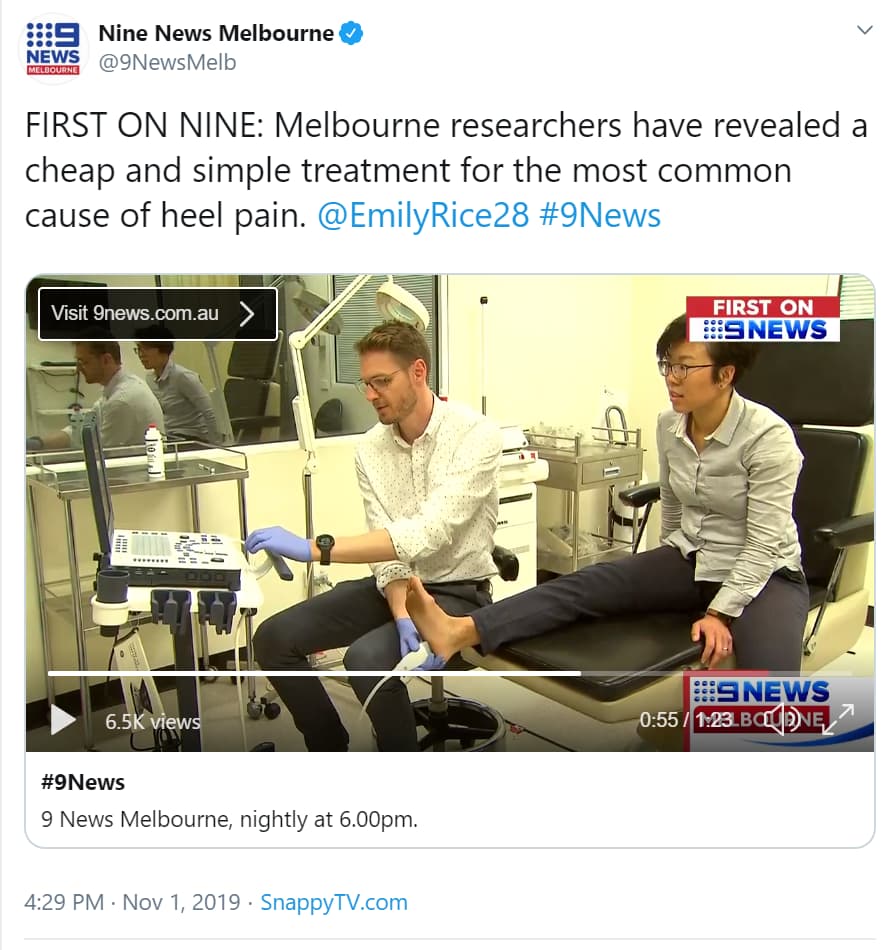
Allow me to introduce the main man, researcher himself – Dr Glen (with one N) Whittaker. Academic at La Trobe University and clinical podiatrist at Fitzpod (Fitzroy Foot and Ankle Clinic).
Glen, we’ve known each other for many years when we were both supervising in the La Trobe University student clinic, working late nights and snacking on super chunk cookies. So much time has gone past that I can’t really remember how you came to be a podiatrist? What’s your Marvel/Podiatry origin story?
Wow I haven’t thought about Supa Chunk cookies since we were supervising together. The Supa Chunks, and your delightful banter, were the only things getting me through those late night clinics.
I did a psychology degree after finishing school but it wasn’t really for me. I wanted to do something that was closer to primary care, and was considering physiotherapy; I even did some bridging subjects. Along the way I discovered podiatry and thought it seemed like a great career, with a tremendous scope of practice. After working as a podiatrist, I still think it’s a great profession and I don’t regret my choice at all.
How did you get into doing your PhD into plantar heel pain?
I did Honours when I was completing my undergraduate degree, and really enjoyed the research I completed. As part of the Honours component we also supervised 2nd year students in the podiatry clinic, which I also really enjoyed. So I thought an academic career that combined teaching and research would suit me. I had spoken with some of the staff at La Trobe, who were aware that I was interested in conducting more research. Then Karl Landorf, who ended up being my primary supervisor, had a scholarship available to do a PhD on plantar heel pain, and I was very keen to accept that offer.
What did you find out during your research into plantar heel pain that surprised you?
I’d say the thing I appreciate now, more than I did previously, is the amount of individual variation there is in a trial. When a trial is reported the results are presented as averages. However, at an individual level there is quite a wide response to treatments. I did understand that this variability existed, which is why the amount of variability is also reported in a trial. However, I don’t think I really comprehended the difference until I saw the findings for myself. For example, there were participants in the trial who received a corticosteroid injection and were effectively “cured”. Conversely, there were some participants who had no response to the corticosteroid injection. This was similar for the foot orthoses group. Now that the trial is completed, I’d like to explore why those individual differences occur to get a better understanding of each treatment.
Has this research changed your clinical practice as a podiatrist?
Yes it has certainly made it more difficult to treat patients! I appreciate how much we don’t know, and that there is limited evidence to support many decisions that I make.
Although it has given me more confidence to use foot orthoses to treat plantar heel pain. We have high-level evidence from past randomised trials that foot orthoses are an effective treatment, and the randomised trial we conducted comparing foot orthoses to a corticosteroid injection reinforced those findings.
Thinking about all the people with plantar heel pain out there. What is it that you know, that you wish those with sore heels knew?
There are a few points that I find make an important difference for people with plantar heel pain:
- Although your heel is painful at the moment, it will resolve eventually. The main goal of treatment is to make that resolution happen sooner.
- It is very unlikely that this condition will cause tissue changes that are permanent.
- Combining a variety of treatments is more likely to produce a meaningful pain reduction.
Reflecting back on your PhD, what advice would you give to yourself if you could go back in time prior to starting?
I wouldn’t change anything and I really enjoyed my PhD. My only advice is to not get concerned about waiting for feedback/comments. There is a lot of feedback provided from collaborators/peer reviewers/grants etc., which can take time. This waiting did frustrate me at times, as I wanted to keep things moving.
Thank-you Glen for your time in conducting this interview. Also, thank-you for your promotion of good podiatry practice and adding to the high quality research podiatrists are doing.
